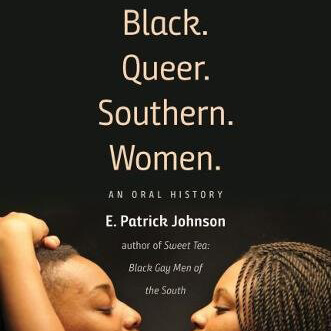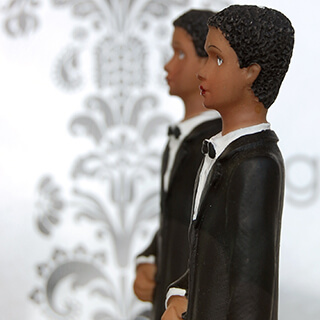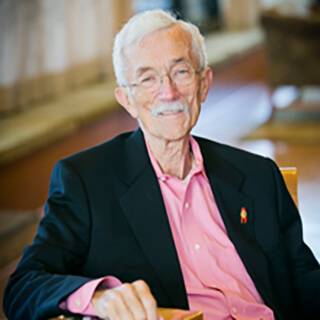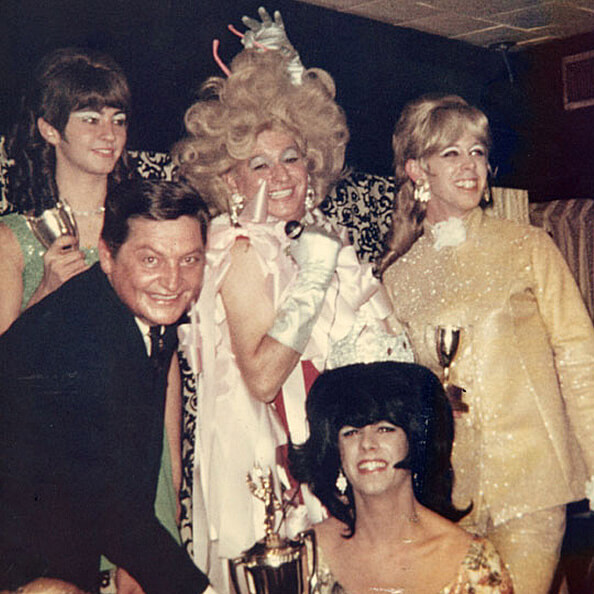Overview
In this illustrated reading from Men Like That: A Southern Queer History (Chicago: University of Chicago Press, 1999), John Howard tells of Aaron Henry, the longtime civil rights activist and head of the Mississippi NAACP who turned accusations of homosexuality into a ritual balance of public disclosure and discretion. Howard made this presentation at the Queer History South Conference, March 29, 2019, in Birmingham, Alabama, on the twentieth anniversary of the publication of Men Like That.
Queer Intersections / Southern Spaces is a collection of interdisciplinary, multimedia publications that explore, trouble, and traverse intersections of queer experiences, past, present, and future. From a variety of perspectives, and with an emphasis upon the US South, this series, edited by Eric Solomon, offers critical analysis of LGBTQ+ people, practices, spaces, and places.
Presentation
About the Author
John Howard is Emeritus Professor of Arts and Humanities at King's College London. He is interested in the historical production of human differences and their attendant inequalities. His work also assesses differences as productive mechanisms of affiliation, identity, coalition, and struggle. Informed by queer, feminist, materialist, critical race, and spatial theory, his research and teaching are engaged primarily with the categories we now know as sexuality, gender, class, race, and region. He is the author of Men Like That: A Southern Queer History (Chicago: University of Chicago Press, 1999) and Concentration Camps on the Home Front: Japanese Americans in the House of Jim Crow (Chicago: University of Chicago Press, 2008).
Cover Image Attribution:
MFDP delegation chairman Aaron Henry challenges Mississippi Democrats at Democratic Convention, Atlantic City, NJ, August 10, 1964. Photograph by George Ballis. © George Ballis/The Image Works.Recommended Resources
Text
Gray, Mary L. Out in the Country: Youth, Media, and Queer Visibility in Rural America. New York: NYU Press, 2009.
Howard, John, ed. Carryin' On in the Lesbian and Gay South. New York: NYU Press, 1997.
———. "Southern Sodomy; or, What the Coppers Saw." In Southern Masculinity: Perspectives on Manhood in the South since Reconstruction, edited by Craig Thompson Friend, 196–218. Athens: University of Georgia Press, 2009.
Johnson, E. Patrick. Sweet Tea: Black Gay Men of the South. Chapel Hill: University of North Carolina Press, 2008.
Leighton, Jared E. "Freedom Indivisible: Gays and Lesbians in the African American Civil Rights Movement." PhD diss., University of Nebraska–Lincoln, 2013.
Long, Worth. "Aaron Henry from Clarksdale." Southern Changes 5, No. 5 (1983): 9–12.
Sears, James T. Rebels, Rubyfruit, and Rhinestones: Queering Space in the Stonewall South. New Brunswick, NJ: Rutgers University Press, 2001.
Web
"Aaron Henry." SNCC Digital Gateway. Accessed June 31, 2019. https://snccdigital.org/people/aaron-henry.
Henry, Aaron. "Oral History Interview with Aaron Henry." By Jack Bass. Southern Oral History Program, no. 4007 (April 2, 1974). https://docsouth.unc.edu/sohp/A-0107/menu.html.
LGBTQ Oral History Digital Collaboratory. University of Toronto (Toronto, Ontario). Accessed June 31, 2019. http://lgbtqdigitalcollaboratory.org.







